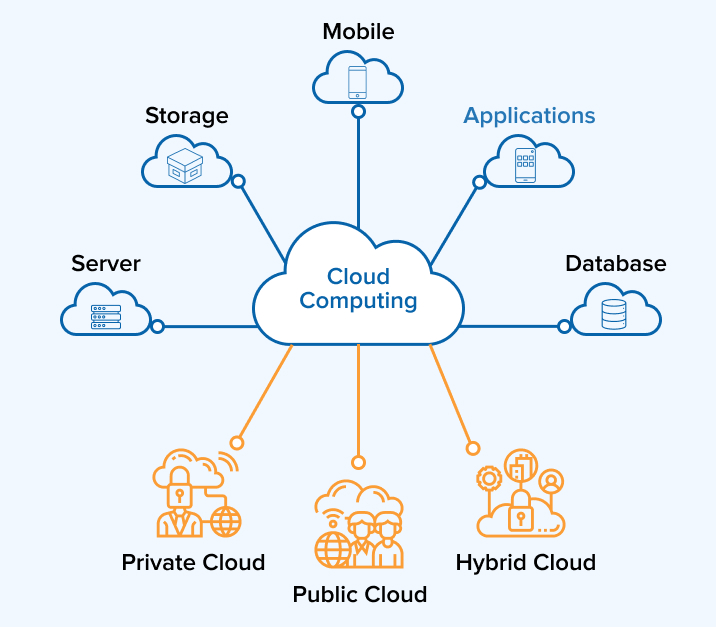Achieve Seamless Scalability With Cloud Services
In the ever-evolving landscape of cloud solutions, accomplishing seamless scalability stands as a keystone for contemporary organizations looking for to remain competitive and versatile. The capacity to effortlessly expand or contract resources in response to changing demands is a pivotal benefit in today's fast-paced digital atmosphere. By understanding the art of scalable cloud remedies, organizations can not just maximize performance and enhance operations but additionally pave the means for future growth and development. The quest for seamless scalability with cloud solutions unveils a globe of possibilities for those ready to embrace the transformative power of vibrant resource administration.
Advantages of Cloud Scalability
Cloud scalability provides organizations the flexibility to dynamically readjust sources based on demand, guaranteeing optimum performance and cost performance. In addition, cloud scalability advertises innovation and testing by enabling companies to easily check new ideas and range them as needed. Ultimately, the advantages of cloud scalability expand past cost financial savings to include improved efficiency, agility, and technology.
Secret Functions for Scaling
Effective scaling in cloud services counts on crucial functions that allow organizations to change sources dynamically based upon need. One vital attribute for scaling is elasticity, enabling sources to scale up or down in response to changing workloads. This makes certain that organizations can fulfill performance demands without over-provisioning resources. An additional key attribute is scalability, enabling systems to take care of boosted work by adding resources effortlessly. This feature is crucial for fitting development without jeopardizing efficiency. In addition, automation plays a vital duty in scaling by automating the provisioning and de-provisioning of resources based on predefined plans. Automation lowers human intervention, boosts efficiency, and guarantees fast reaction to changing needs. Tracking and analytics devices are likewise important for scaling, offering insights into source utilization, performance metrics, and potential bottlenecks. These tools make it possible for organizations to enhance and make educated choices resource appropriation for effective scaling. Generally, these essential features collectively equip organizations to achieve smooth scalability in cloud solutions.
Executing Auto-Scaling Techniques
To effectively maximize resource appropriation and adapt to varying work, companies need to tactically execute auto-scaling techniques in their cloud solutions framework. Auto-scaling permits systems to instantly change the number of compute sources based on real-time need. There are different auto-scaling techniques that companies can utilize, such as predictive scaling, which utilizes historic data to anticipate future resource needs, and reactive scaling, which responds to current work modifications.

Ideal Practices for Scalability
For organizations intending to enhance their scalability in cloud services, applying ideal methods is vital for optimal efficiency and resource monitoring. One key best practice is designing applications with a microservices style. This method breaks down applications into smaller, independent solutions that can be deployed, upgraded, and scaled independently, allowing for better flexibility and scalability.
An additional crucial method is utilizing containerization modern technology, such as Docker or Kubernetes. Containers allow the packaging of applications and their reliances into separated see this site systems, making it simpler to scale elements separately and release them regularly throughout different atmospheres.
Additionally, carrying out automated deployment and framework as code (IaC) can streamline scalability efforts (linkdaddy cloud services). Automation devices like Terraform or Ansible help in provisioning and taking care of sources effectively, reducing hands-on mistakes and enabling quick scalability
Moreover, checking performance metrics, setting up notifies, and performing regular capacity planning are important techniques to guarantee positive scalability monitoring. By sticking to these ideal techniques, organizations can achieve seamless scalability in their cloud services while maximizing efficiency and source utilization.
Monitoring Performance Metrics
When analyzing the performance of cloud services scalability, very closely keeping track of performance metrics is critical for ensuring ideal capability and resource allotment. By continually tracking essential performance indications (KPIs) such as response times, throughput, resource, and latency utilization, companies can obtain beneficial insights right into the health and wellness and effectiveness of their cloud facilities. Monitoring performance metrics permits for the early discovery of prospective traffic jams or concerns that might affect scalability, making it possible for aggressive actions to be taken to address them prior to they intensify.

Verdict
In verdict, attaining seamless scalability with cloud services is important for organizations to maximize performance, enhance development, and preserve high Source performance levels during peak times. By leveraging the benefits of cloud scalability, executing auto-scaling techniques, utilizing essential features such as flexibility and automation, and complying with best methods like application style and performance surveillance, services can efficiently scale their systems while making the most of resource use and performance.
The pursuit for seamless scalability with cloud services unveils a globe of possibilities for those prepared to welcome the transformative power of vibrant resource administration.
Cloud scalability provides companies the versatility to dynamically adjust sources based on demand, making certain optimum efficiency and price effectiveness. Another vital function is scalability, allowing systems to discover this info here take care of boosted work by adding sources flawlessly.For organizations intending to enhance their scalability in cloud services, applying ideal practices is crucial for optimum efficiency and source monitoring.When examining the performance of cloud services scalability, closely monitoring efficiency metrics is important for making certain optimal performance and source allotment.